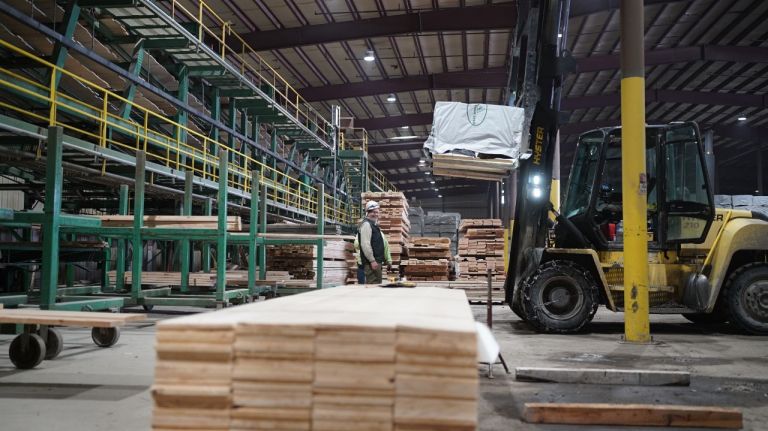
“A large part of the lumber we produce is used in the international construction industry. The production of high-quality and, most of all, reliable products that keep their promises is an integral part of our success. That is why we trust the solutions and systems Microtec offers in the area of quality management,” Jason Deshazer says, explaining the decision to rely on Microtec for quality control.
Deshazer works for F.H. Stoltze Land & Lumber in the US state of Montana where he is responsible for quality management in the company’s sawmill. Established in 1912, the family-run company looks back on as many as 111 years of history. As the name suggests, F.H. Stoltze Land & Lumber has its origins in the forestry sector. Today, the company owns and manages more than 16,000 hectares itself. “We want to promote a sustainable circular economy that includes forest management and the subsequent in-house processing. Here in the northwest of the country, we are one of the last remaining companies that still own forests and therefore have access to valuable sources of raw material,” Deshazer explains.
In 1923, exactly 100 years ago, the company finally opened its own sawmill at its headquarters in the US state of Montana. Today, two band saws are used to produce around 120,000 m³ of lumber a year (2-by-4 equivalent). “You don’t stay in business that long without making a constant effort to evolve and change,” Paul McKenzie, vice president and general manager of F.H. Stoltze Land & Lumber, emphasizes.
Staffing situation got the ball rolling
For decades, quality assessment and evaluation was done by specially trained employees through visual sorting. However, the omnipresent shortage of skilled workers did not spare the northwest of the US either. Ultimately, this difficult staffing situation prompted the company’s management to rethink its quality management and to redesign it from the ground up. “In our region, it’s basically impossible to find trainees for the job of visual lumber sorting. We recognized this problem early on and wanted to tackle it proactively,” Deshazer tells us and adds: “During our research, we came across Microtec. It quickly became clear to us that they are the most advanced in terms of technology and, above all, that they are able to meet our high expectations regarding quality.”
Finally, in 2021, several long-standing employees retired, and the company invested in a Microtec Lucidyne lumber scanner, which was complemented by the QC Assist tool at the beginning of this year. “Now, only one employee works on the sorting line – instead of the five that used to work there. Manual sorting is no longer necessary. Now, the task is limited to checking the process and its results,” the quality manager says.
Thanks to the use of QC Assist, our customers know that we offer them lumber of consistently high and reliable quality.
Results as decisive factor
Initially, the staffing situation may have prompted the company to make the investment. In the end, however, the quality of the results was the decisive factor. “We have special circumstances here in the region. As a result, we process a large number of different types and qualities of wood. We mainly cut Douglas fir and larch, but we also process spruce, pine and other types of softwood from time to time. This comes with an additional challenge, i.e. having to take many different sorting criteria into account. Training an employee in this is a huge challenge. The scanner, on the other hand, can be easily expanded to include additional types of wood or criteria with the help of artificial intelligence,” Deshazer explains.
Taking quality control to a new level
In principle, QC Assist is an additional, higher-level tool which is able to monitor the scanner results and to improve and optimize them if necessary.
All boards which pass through the scanner are given consecutive and traceable IDs. Every day, three to four finished lumber packages are randomly picked out and then undergo an additional quality check. “This is where QC Assist comes into play. After we have picked out the samples, we go through each board in the stack one by one and compare the scanner results with the board’s actual properties and characteristics. Whenever we find any inconsistencies, we can enter all the data directly into the QC Assist interface using a tablet,” the quality manager tells us. What makes QC Assist so special is that it has a direct interface to Microtec. This allows the scanner specialist’s technicians to check data immediately and draw valuable conclusions which are then incorporated into the customer’s production process. “Microtec immediately gives us feedback and lets us know when we need to make any adjustments to the scanner settings. This not only helps to continuously optimize and train the scanner. It also results in a massive improvement of our entire individual sorting performance and our internal quality control process. Thanks to the regular checks, we are able to deliver products of high and consistent quality,” Deshazer says, summarizing the advantages of the new tool.







